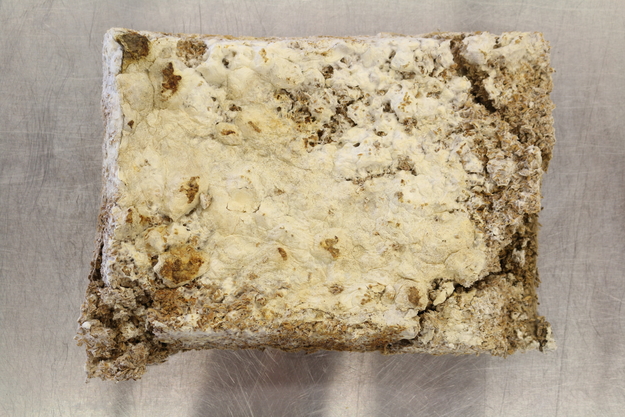The project
Within the Clean Lab at Mediamatic Biotoop, the Myco Insulation Brewery team are keeping themselves very busy trying to find a up cycled solution for beer waste. Brewing a delicious range of test beers in small 45 litre batches, experimenting and changing the recipe weekly and just like many projects at Mediamatic, the team don't see the waste grains from the process as waste but as a substrate to support the growth of mycelium, the vegetative part of a mushroom. Once grown, mycelium has many properties that are perfect for the insulation of buildings, which is handy because our black barn can get a little chilly in the winter months. The team are experimenting with forming solid mycelial panels that can be used as an environmentally driven alternative to conventional insulation.
What is a clean lab?
A clean lab, or clean room as it's sometimes called, is a controlled environment where the concentration of airborne particles is controlled to specified limits so that biological materials and organisms can be manufactured, in our case Mycelium, with the risk of contamination reduced as much as possible. Sub-micron airborne contamination can come from people, products, process and equipment and must be continually removed from the air. Within our clean lab we have a laminar flow system where the air is blown in from a surface that covers the entire ceiling and then the air then leaves the space from the floor. This way the clean air takes all the dirty particles down in the floor and limits the risk of contamination.
What is Mycelium?
Mycelium is the vegetative part of a mushroom, in fact the mushroom is the fruit of a mycelial organism which functions in order to release spores to spread the germination wider so the mycelium can continue to grow. Mycelium's aim is to continue to exist, so here is an example in more familiar terms; if you imagine the mycelium is a tree with branches growing and growing and then when it is ready it produces fruit, apples for example, which contain seeds, the wind blows the fruit and the seeds off the tree onto the ground with a wider diameter than the original tree and the seeds can grow a new tree, or more mycelium to repeat the process.
Within the natural world mycelium has many benefits. Mycelium helps heal ecosystems by cycling nutrients through the food chain and restoring weakened immune systems of environments. It decomposes organic matter by breaking down the carbon and nitrogen in organic matter to provide nutrient rich soil, and it communicates with other organisms by being aware and responsive to changes in its environment, sending chemical signals to them to warn them of harmful bacteria, parasites or environmental changes. In other words, Mycelium is a super star in the natural world and the world's rich biodiversity wouldn't have been possible with out it.
Within the design world, mycelium as a material has just as many benefits; it is light weight, super strong, flame retardant, and self producing. Many artists are exploring new applications for the material, from chairs and building bricks, to clothing and footwear.
The 'circular' process
In order to be as resourceful as possible, to follow our beliefs in circular systems and to utilise the many properties of mycelium this project explains how the waste from one process can be very useful for another which in turn can produce a functional product in the form of insulation panels .... and tasty beer.
Producing beer is a technical process involving the extraction of sugars from grains, yeast is added which reacts with the carbohydrates in the sugar to produce alcohol and carbon dioxide through a fermentation process. The grains are an important part of the process but are only needed at the beginning, once they have been removed from the wort (sugary water produced from boiling the grains before yeast is added) they have done their job and are thrown away. Not if we have anything to do with it! By rinsing the excess sugars from the grains and using an old tumble dryer to centrifuge the water from the grains (a machine with a rapidly rotating container that applies centrifugal force to its contents) the grains are ready to enter the next phase. It is important to rinse the sugar and drain them because this reduces the risk of contamination from nutrient rich sugars and bacteria in water.
The next phase is where the mycelium joins the party. Firstly, the sealed bags of grains are sterilised in a stove top pressure cooker to kill any bacteria, then they enter their sterilised home within the laminar flow. Mycelial spawn, germinated spores, are added to the bags which is called the inoculation
